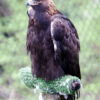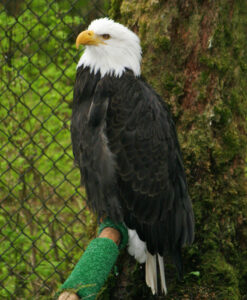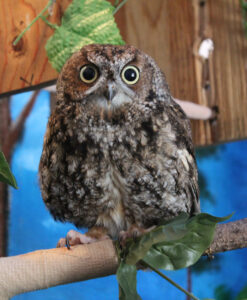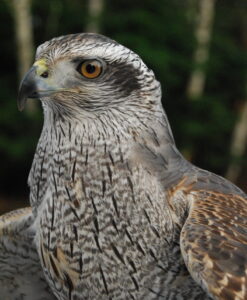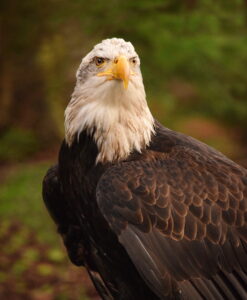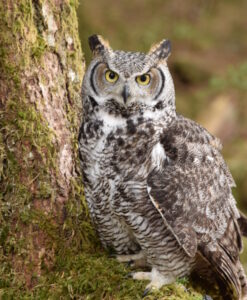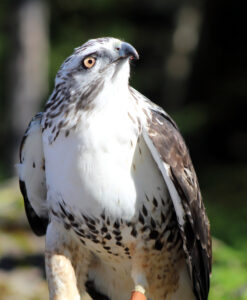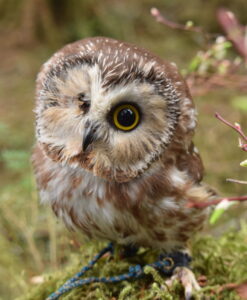The Alaska Raptor Center welcomed Fe (pronounced FEY), a female American Kestrel who hails from Santa Fe, New Mexico, in November 2021.
In July 2021, a rescuer brought her to the New Mexico Wildlife Center. The rescuer had kept this hatch-year bird at home for several days and Fe became comfortable with humans. After four days of initial care (rehydration, monitoring, etc.), the care team in New Mexico moved her to an outdoor enclosure with other kestrels, where she remained for five weeks. Despite being with her own species, she engaged with them minimally, and continued to exhibit signs of habituation around humans. She would not fly away when approached, and she anticipated that humans would serve her food. This meant she likely couldn’t survive in the wild on her own, but she would be a good candidate for education programming.
The Alaska Raptor Center’s avian care team quickly discovered upon Fe’s arrival that she is very food motivated and took to positive reinforcement training amazingly.
American Kestrels are one of the few North American raptors in which the male and female have different plumage colors. the male is slightly darker and has more vibrant, boldly patterned feathering, with distinctive blue-grey wings and a black-spotted belly. The female is lighter and more muted, better able to blend to her surroundings.
North America’s smallest falcon prefers to nest in tree cavities along roadways, streams, ponds or on the edge of the forest. They are commonly seen perching on utility wires or hovering over open fields in search of prey. Kestrels eat mostly insects, small rodents, birds and reptiles, and will occasionally prey on amphibians.
These birds have a wide distribution throughout the Americas. Their range stretches from the coast of Alaska all the way across northern Canada to Nova Scotia and extends south through North, Central and South America.
————————————————–
The Alaska Raptor Center’s Adopt-A-Raptor program allows people around the world to help us care for Alaska’s wild birds. By becoming an adoptive “parent,” you help support the daily care, feeding and any required medical treatment for your adopted bird.
Adoptive “parents” receive an official adoption certificate, a photograph and biography of the adopted bird, natural history information, and a one-year membership to the Alaska Raptor Center. As a member you will receive a 10% discount on all of our gift shop items in future purchases.
Teachers also can bring Alaska’s wildlife into their classrooms with the Alaska Raptor Center’s “Adopt-A-Raptor” program. Classes help provide for the daily care, feeding and medical treatment of their adopted bird. In return, teachers receive curriculum materials to help plan lessons on raptors and their habitats; an adoption certificate and photo of the adopted bird to display in the classroom; natural history and information on the bird; and a one-year membership to the Alaska Raptor Center. Most important, the students learn about stewardship and caring for wild animals, building a foundation and appreciation for nature conservation they can develop as they grow.
Thank you for your support and congratulations!
| Adoption Level |
|---|
Related products
Adopt-a-Raptor
Adopt-a-Raptor
Adopt-a-Raptor
Adopt-a-Raptor
Adopt-a-Raptor
Adopt-a-Raptor
Adopt-a-Raptor
Adopt-a-Raptor
Adopt-a-Raptor
Adopt-a-Raptor
Adopt-a-Raptor
Adopt-a-Raptor


